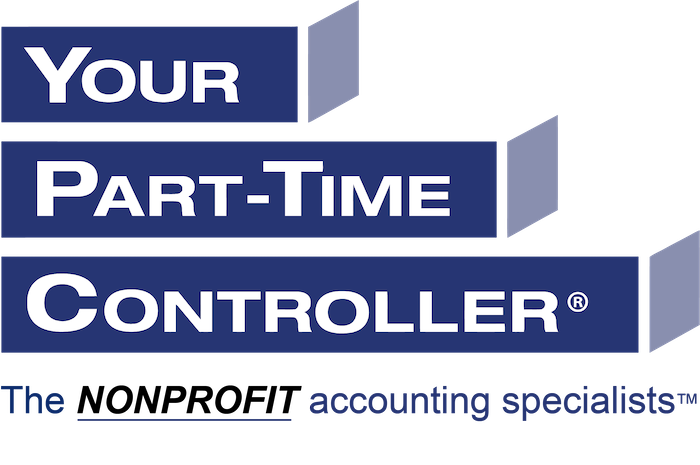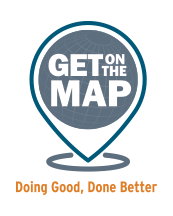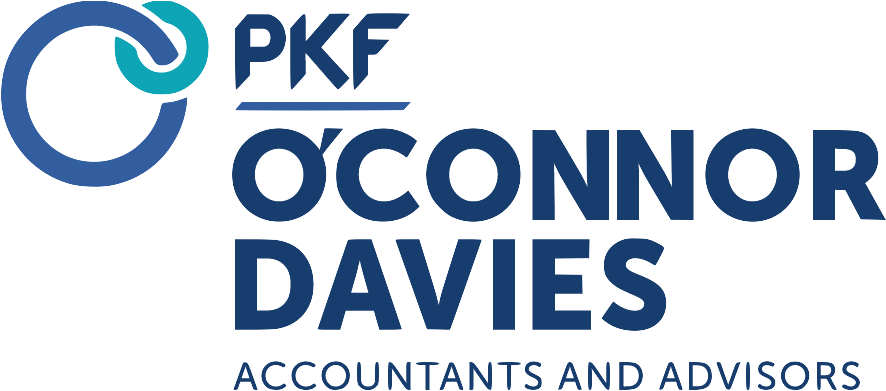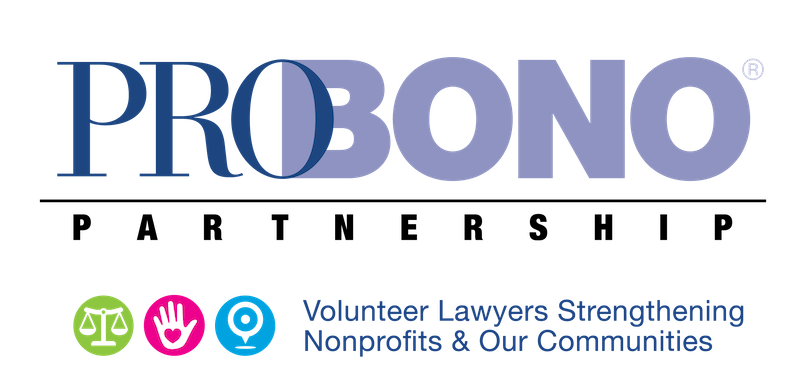Site Search
- resource provided by the Forum Network Knowledgebase.
Search Tip: Search with " " to find exact matches.
Virtual Marketplace
The Virtual Marketplace provides a list of vendors providing services of particular interest to the philanthropic community.
The Council of New Jersey Grantmakers encourages its members to conduct their own due diligence when selecting vendors. This listing does not imply endorsement by CNJG.
If you are interested in being listed here, please contact us.
Marketplace Vendors
Tom Knowlton
CEO | CSR Talent Group
New York, NY
1-917-751-4482
[email protected]
www.csrtalentgroup.com
CSR Talent Group provides companies with vetted, flexible CSR, Philanthropy, ESG and Sustainability experts that can be hired on a project basis or for longer term needs. Our on-demand, global talent marketplace provides companies with a turnkey, standardized RFP process followed by immediate access to their choice of specialized experts who match their needs – and all without the overhead of a traditional consulting firm. For more information, www.csrtalentgroup.com.
Christopher D. Petermann, CPA, Co-Partner-in-Charge Private Foundation Practice
Scott A. Brown, CPA, Partner Private Foundation Practice
20 Commerce Drive, Suite 301
Cranford, NJ 07016
(908) 272-6200
[email protected]
[email protected]
www.pkfod.com
PKF O’Connor Davies, LLP is a full-service certified public accounting and advisory firm with offices located in New York, New Jersey, Connecticut, Maryland, Florida, Rhode Island and Massachusetts and more than 1,400 professionals. The Firm provides a complete range accounting, auditing, tax and management advisory services to over 4,000 not-for-profit organizations – including 500 private foundations.
Christine Michelle Duffy, Director New Jersey Program
Parsippany, NJ
(732) 227-0800
[email protected]
www.probonopartner.org
Pro Bono Partnership provides free legal help to nonprofits in New Jersey, New York, and Connecticut. The Partnership has been helping nonprofits build capacity, reduce risk, and keep up with legal requirements for 25 years! In addition to direct legal advice, the Partnership offers a free Legal Resource Helpline (in NJ: 973-240-6955), important updates via email, and free and low-cost webinars, workshops, and articles covering most-asked-about topics.
Adam Holzberg, Partner
389 Interpace Parkway, Ste 3
Parsippany, NJ 07054
(973) 554-6065
[email protected]
www.saxllp.com
SAX is a Top 100 accounting, tax, and advisory firm serving the needs of privately held companies, family-owned businesses, nonprofit organizations, and high-net-worth individuals. With a commitment to guiding clients through complex financial landscapes, SAX provides strategic solutions that drive growth, compliance, and long-term success. Founded in 1956, the firm is headquartered in Parsippany, NJ, with additional offices across the region.
Amy Fiore, Managing Director
LinkedIn
[email protected]
Maureen Prout Alvidrez, Managing Director
LinkedIn
[email protected]
Sobel Bixel: Consulting for Nonprofits is a fundraising and organizational management consulting group of experienced nonprofit and development professionals focused on campaigns, feasibility studies, strategic planning, leadership training & development, and fundraising strategy. Learn more at www.sobelbixel.com
Keith Timko, Executive Director
One Gateway Center, Ste. 2600
Newark, NJ 07102
(646) 436-0453
[email protected]
www.supportcenteronline.org
Support Center is a nonprofit capacity building organization originally established in 1971. We have been a trusted local partner to nonprofits in the greater New Jersey/New York/Connecticut area for more than 30 years. Support Center specializes in organizational development, consulting and executive transition and has worked with grantmakers directly and with grantees on initiatives ranging from leadership programs to individual executive transition and strategy and management initiatives.

Larissa Lazaro, Sales Consultant – Nonprofit
640 5th Avenue, 19/F
New York, NY 10019
(646) 895-0995
[email protected]
www.trinet.com
TriNet provides small and medium-size businesses (SMBs) with full-service HR solutions tailored by industry. To free SMBs from HR complexities, TriNet offers access to human capital expertise, benefits, risk mitigation and compliance, payroll, all enabled by industry leading technology capabilities. TriNet’s suite of products also includes services and software-based solutions to help streamline workflows by connecting HR, Benefits, Employee Engagement, Payroll and Time & Attendance. From Main Street to Wall Street, TriNet empowers SMBs to focus on what matters most—growing their business and enabling their people. TriNet, incredible starts here.

George H. Stout Jr., Manager
(215) 525-3121
[email protected]
www.yptc.com
For nearly 30 years, Your Part-Time Controller has focused exclusively on helping nonprofit organizations with their accounting, financial reporting, and financial management. YPTC works on-site or remotely, with all types of nonprofit organizations.
Share your giving data and Get on the Map!
Your data will power valuable resources for your organization and our region including access to the CNJG Foundation Funding Map and COVID-19 Funding Map on the powerful interactive searchable mapping platform, engineered by Candid.
How to share your data
 Export your grants data from your software system.
Export your grants data from your software system.
Most grants management software products have documented how to export the information.
If you don’t see your software provider on that list, download their eReporting template, an Excel spreadsheet, which you can use to complete the information they need.
Submit your data to Candid by emailing the completed template with your data in it to [email protected] and cc Craig Weinrich.
You can also follow the detailed instructions on this page.
Candid will make every effort to post your data to the map within 5 business days.
Get the answers to your Frequently Asked Questions including:
What information do I need to provide?
Why is it important to provide a grant description?
How is my grants data coded by Candid?
How frequently should I share my grants data?
How quickly will my information appear on my complimentary map?
Can I embed my complimentary map on my website?
What should I do if corrections need to be made to my data?
How will my grant information be used and shared?
How do I responsibly share sensitive grants data?
CNJG is pleased to partner with the Office of Internet Connectivity and Growth (OCIG) within the National Telecommunications and Information Administration at the U.S. Department of Commerce on this series to help the funding community know about the federal government’s investment into broadband access, and how communities, residents and organizations can take advantage of these funding opportunities.
The National Telecommunications and Information Administration (NTIA) and the New Jersey Office of Broadband Connectivity are hosting a series of public virtual roundtable meetings, which will take place once per month from February through July 2023. Join us to learn more about Internet for all, Broadband Equity, Access and Deployment (BEAD) and the Digital Equity Grant funding planning in New Jersey.
These meetings are intended to create open communication and collaboration on BEAD and DE projects. This first meeting is an introduction to these programs, explains the coordination between NTIA and the NJ Office of Broadband Connectivity, and outlines upcoming important upcoming dates.
Resources
Webinar Recording
BEAD Info Sheet
Digital Equity Act Info Sheet
Ways to Get Involved – Local Governments
Ways to Get Involved – Tribal Entities
Ways to Get Involved – Community Based Organizations
Ways to Get Involved – Communities of Color
Ways to Get Involved – Industry
The 4th goal of CNJG’s strategic plan calls for CNJG to expand partnerships and collaborations to create more value for our members. One of our long-standing partnerships is with the Council on Foundations to collect salary data, which we will include in our upcoming triennial 2023 New Jersey Philanthropy Benefits & Salary Summary report.
We are now partnering with YOU to collect your data on the benefits that your organization provides to your staff and/or trustees. The CNJG benefits survey is open for you to complete.
The New Jersey Philanthropy Benefits & Salary Summary report is often cited as one of the most valuable benefits of membership, and the more data we collect from a variety of philanthropic organizations, the more valuable the report becomes! As we did in 2020, we’re also pleased to ask demographic information about your board and staff within this survey. Even if you do not have any paid staff, you will be able to add your board demographic information to the survey.
We aim to publish the 2023 New Jersey Philanthropy Benefits & Salary Summary report in late 2023. The report is the premiere benchmarking tool for our members and the philanthropy sector in New Jersey.
The survey closes on August 4, 2023. We encourage every CNJG member organization to complete the survey. While the survey is long – taking about 45 minutes to complete – it allows us to create a truly comprehensive report to inform your decision making. We encourage you to review the questions in advance to gather the information you will need to make it easier for you to complete the survey in one sitting. If you have any questions about the survey, please contact Director of Member Services, Craig Weinrich. I hope that one person from your organization will complete the survey before August 4.
A couple more summer notes – we will not publish CNJG News in August, but will resume in September. And, to recognize and show appreciation for our hard-working staff, the CNJG office will be closed on Fridays throughout the summer. This is one benefit that we offer our staff. It will be fascinating to see how many others offer this same benefit, so please complete our survey before the end of the July!
Theresa Jacks, President and CEO
Council of New Jersey Grantmakers
It’s always a mad dash to the end of the year, and this year is no exception.
But before we close out the year, CNJG members and special guests will gather next Thursday, December 14, at the 2023 Annual Meeting & Holiday Gathering, to learn together at the pre-meeting workshop, welcome new members, attend the annual business meeting of members to elect trustees and recap our year, enjoy conversation and networking over lunch, and hear a dynamic discussion related to an important topic for New Jersey’s philanthropic sector. The Annual Meeting & Holiday Gathering is always a great opportunity to see longtime friends, meet new colleagues, and network with other funders!
Our theme this year couldn’t be more timely - collaboration. The fireside chat, Sustainable, Effective, and Equitable Collaboration – A Conversation that Centers Community, will feature Nidhi Sahni, Partner and Head of US Advisory Group, Bridgespan, and Lucy Vandenberg, Executive Director, Schumann Fund for New Jersey. And the learning doesn’t stop - we’ve also curated several resources to help inform your collaborative efforts.
Thank you to our Annual Meeting sponsors, Signature Sponsor – Prudential; Collaborating Sponsor - Victoria Foundation; Connecting Sponsors - Robert Wood Johnson Foundation and Devils Youth Foundation; and Supporting Sponsors – Grunin Foundation, Horizon Blue Cross Blue Shield of New Jersey, Princeton Area Community Foundation, and WSFS Bank. CNJG thanks the NJM Insurance Group for a donation in support of the Annual Meeting. Sponsorship underwrites our Signature events. It is only through the generosity of our sponsors that we can provide our Signature events. We are grateful for your support.
Thank you for your membership and support in 2023. CNJG supports and elevates New Jersey’s philanthropic community through shared learning, collaborative and trusting relationships, network building, and leadership. We greatly value your membership in the Council of New Jersey Grantmakers, and your ongoing support of our work to strengthen philanthropy in the state.
We can’t wait to see you next week! This event is often the place where the first seeds of collaboration and partnership are sown.
Theresa Jacks, President and CEO
Council of New Jersey Grantmakers
A corporate member queried the corporate listserve which technology tools they use for their corporate giving system/platform. CNJG compiled the responses and combined it with previous responses from other technology systems queries to create this list of “Who Uses What Technology Systems.” If your organization is not listed, please email the names of those systems to Craig Weinrich.
A CNJG member queried our listserves on what online grants management system members use and would recommend for a small foundation. CNJG compiled these responses, and listed the different systems that members do use.
From the Commonfund, these white papers on investment policy statements, spending policy, board governance and risk tolerance, together with their most recent studies of investments at private and community foundations, operating charities and nonprofit healthcare organizations are made available though CNJG's Investment Forum for Foundations and Endowments.
There are many ways to start a giving circle. These 10 steps can give you a starting point and a basic roadmap.
Step One - Set Goals and Structure
Bring your group together for a first meeting. Take time at this first meeting to discuss what a giving circle is. Begin the process of setting goals and structure now. Some of the decisions that you may want to discuss at this meeting are:
- How many times will the group meet?
- How will we determine our funding focus?
- Where do we hold meetings?
- Is there a limit on number of participants?
- What is the size or range of the financial contribution each member will make?
- What is the time commitment?
Remember: giving circles go beyond individual “pet” charities to pool your resources for a common goal with greater impact. Members will contribute time as well as dollars in the process.
Step Two – Establish Mission and Commitment
Once the group sets up regular meetings, it is a good idea to:
- Establish a mission
- Agree on common goals and objectives
- Name your group
- Set up an operating structure
Remember: The contribution amount can vary. Circles requirements vary – starting at $10 and going up to $25,000 or more. The group decides what is reasonable for their circle. It is important for the group to agree on the final amount.
Many circles choose one contribution level for everyone. Since no single vote on a potential grantee should outweigh another, many circles find this arrangement the best. Other circles find that a tiered giving structure or anonymous giving meets their needs.
Step Three – Decide Where to Place Your Collective Dollars
At the start of each year, members should make a financial commitment to the giving circle (i.e., write the check). There are options for where your circle members’ money can sit. There are benefits to all the options, depending on the circle’s needs, experience, and structure. Giving circles generally have no administrative “overhead.” Volunteers administer the circle and all dollars go to the designated nonprofit/s. However, some circles have found it useful to pay for administrative costs. They then receive a level of service that they cannot provide for themselves. You can:
- Open a joint bank account. (Check with a professional advisor on the tax implications)
- Partner with an organization that can act as a financial administrator of the funds.
- Establish a Donor Advised Fund at a Community or Public Foundation.
- Create a public foundation.
- Write individual checks to the chosen nonprofit/s.
- Explore other creative options that interest the group.
Step Four – Establish an Issue/Focus Area
This step may take significant discussion. Encourage the group to be as specific as possible. For example, if the group is interested in health issues for women – what specific health issues, age range or demographic? In what geographic area will you focus?
You may also want to invite “experts” to talk to the group. Some circles assign group members to investigate particular issues. Consensus is important when a giving circle decides on its focus area.
Step Five – Create Smaller Work Groups
Having members of the group volunteer for particular tasks will build personal commitment. Smaller groups make task members with different tasks.
Step Six – Develop Process and Criteria for Funding
You may decide to ask for written applications from a charity. Or, you may evaluate a group in another way. Some questions to consider as you determine your funding philosophy:
- How will we decide who receives funding?
- Will we review grant applications?
- Will we visit specific organizations that could “qualify”?
- What kind of a report will we want at the end of the project period from the recipient of these funds?
This process can be simply choosing a recipient organization based on information you gather. Or the process can be more involved. Some circles review written applications, visit the organizations and ask for a presentation on the work the organization does.
If your group is unsure of how to assess an organization, you may want to consider asking someone with a background in grant making or nonprofit administration to give the group assistance.
It is also important at this stage to establish final evaluation criteria. How will you measure your giving circle’s impact? How will the organization/s that receive funding measure the impact of this funding?
Note: Many circles try to match the level of effort they require from the grantee to the amount of money that they have to give. Nonprofits are often understaffed and short on time. It can be a burden for them to create lengthy proposals and reports for relatively small amounts of money.
Step Seven – Define Partnership with Recipient of Grant Award
Do members of your circle want to volunteer for an organization you have funded? Your circle should define in what ways they could offer assistance. Web development, finances, program planning, legal work, and mentoring are some examples of how your members might get involved. Be sure to be clear with the expectations of all involved in this new partnership.
Step Eight – Review Potential Recipients
Conducting site visits with potential grantees can be helpful in the grantmaking process. This is the time to ask questions, get clarification, and see the organization in action.
The group should set aside plenty of time to discuss the potential grantees. Members may feel strongly about funding different organizations. There needs to be time to go through this process to reach agreement.
Smaller giving circles often use a consensus model for decision-making. Larger circles tend to rely on committees and voting systems.
Be willing to take a risk by funding a start-up nonprofit, or by funding a nonprofit that may seem unconventional to traditional funders. Remember you are the “Board of Directors” and can set your own guidelines.
Step Nine – Make Grant Awards
Immediately following the group’s decision, alert the recipient and let them know when they can expect a check. It is good practice to let organizations who are not receiving funds from your circle know of your decision, too.
Step Ten – Evaluate Your Giving Circle
On a regular basis, examine the short term and long term goals of the giving circle. This will help develop a sense of satisfaction with the work you are doing and show how your contributions have made a difference. Try to determine what impact the group has had. Candid feedback from the organizations you have funded and partnered with will be an important ingredient of this process.






